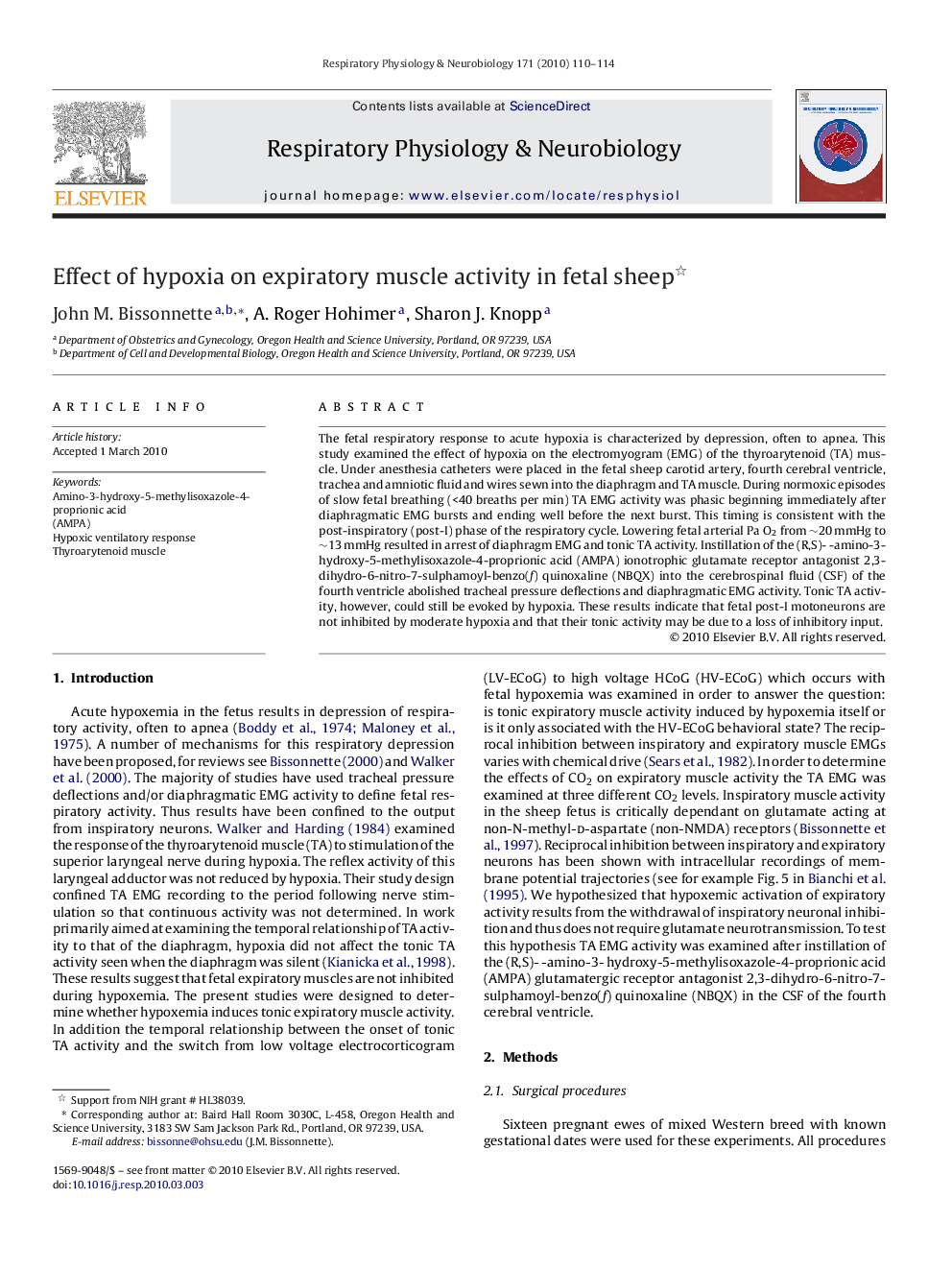| کد مقاله | کد نشریه | سال انتشار | مقاله انگلیسی | نسخه تمام متن |
|---|---|---|---|---|
| 5926601 | 1167381 | 2010 | 5 صفحه PDF | دانلود رایگان |

The fetal respiratory response to acute hypoxia is characterized by depression, often to apnea. This study examined the effect of hypoxia on the electromyogram (EMG) of the thyroarytenoid (TA) muscle. Under anesthesia catheters were placed in the fetal sheep carotid artery, fourth cerebral ventricle, trachea and amniotic fluid and wires sewn into the diaphragm and TA muscle. During normoxic episodes of slow fetal breathing (<40 breaths per min) TA EMG activity was phasic beginning immediately after diaphragmatic EMG bursts and ending well before the next burst. This timing is consistent with the post-inspiratory (post-I) phase of the respiratory cycle. Lowering fetal arterial Pa O2 from â¼20Â mmHg to â¼13Â mmHg resulted in arrest of diaphragm EMG and tonic TA activity. Instillation of the (R,S)- -amino-3- hydroxy-5-methylisoxazole-4-proprionic acid (AMPA) ionotrophic glutamate receptor antagonist 2,3-dihydro-6-nitro-7-sulphamoyl-benzo(f) quinoxaline (NBQX) into the cerebrospinal fluid (CSF) of the fourth ventricle abolished tracheal pressure deflections and diaphragmatic EMG activity. Tonic TA activity, however, could still be evoked by hypoxia. These results indicate that fetal post-I motoneurons are not inhibited by moderate hypoxia and that their tonic activity may be due to a loss of inhibitory input.
Journal: Respiratory Physiology & Neurobiology - Volume 171, Issue 2, 30 April 2010, Pages 110-114